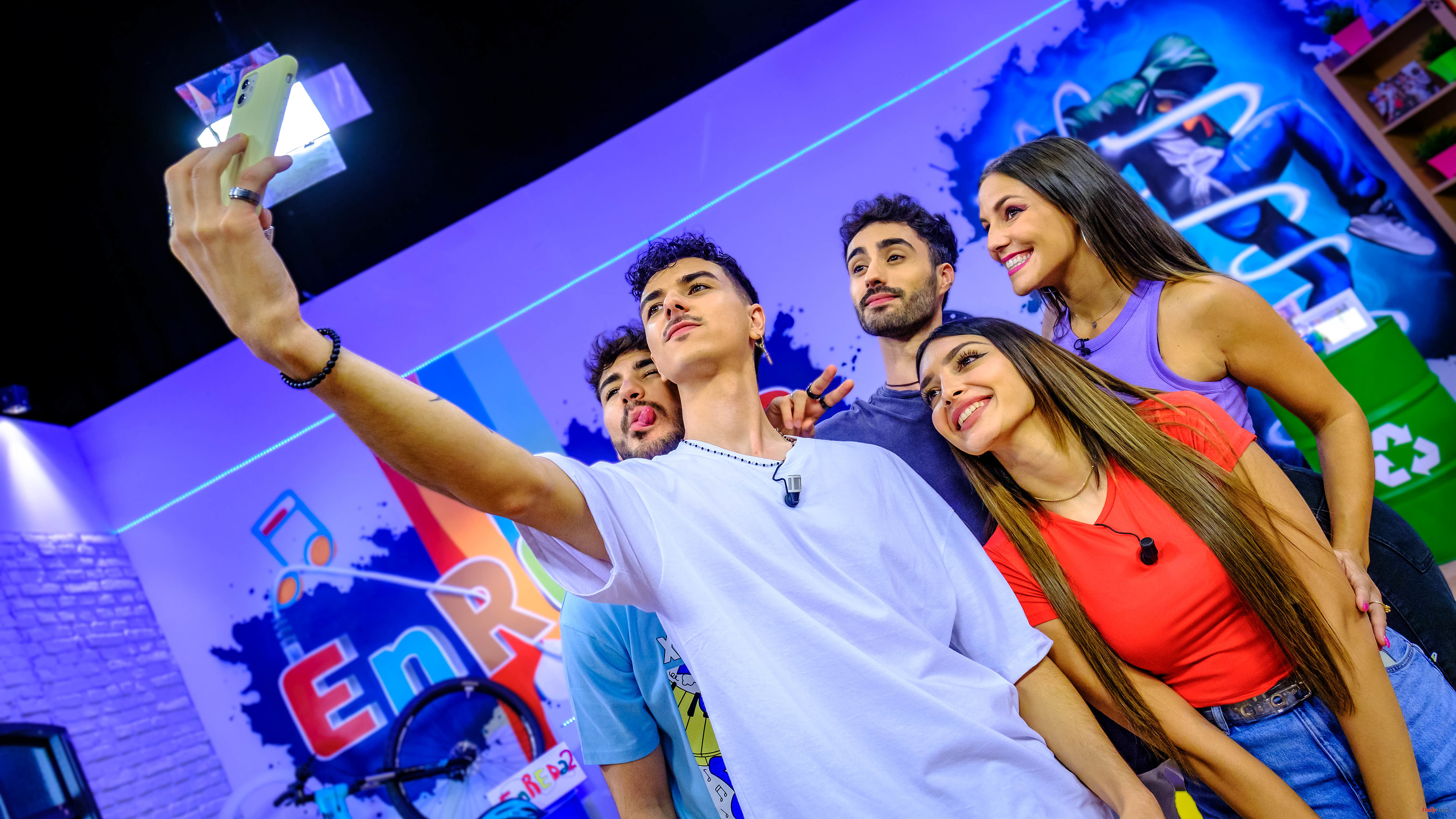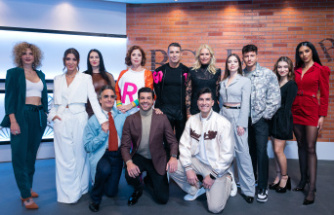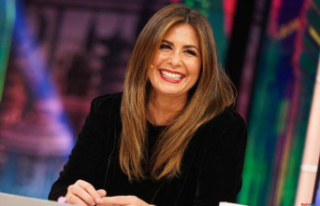A year ago everything changed in Canal Sur. Suddenly, something happened in their metrics, their data was losing years, the public was mutating. As in a Benjamin Button effect, a year ago Andalusian television began to rejuvenate. It was not by chance nor did it come suddenly, it was produced after years of study and experience and with a final yes that nobody expected... and that worked.
"We have been making content for all the general, public and private channels for 25 years, and we have been detecting that linear television now only belongs to a fairly adult generation," says Guillermo Sánchez Castañón, executive producer of Win Win Audiovisual, "we saw it coming for a long time and nobody has done anything to stop it". In his fight against the "disaffection of young people", in his production company they saw a fear among the great managers: "No one dared with innovative formulas."
And they decided to jump into the pool. From his reflection, EnREDa2 was born, a unique format on the small screen that combines dissemination and new narratives. Canal Sur accepted the challenge, and the audience did the rest.
After several reschedulings in view of the bad initial data, the program found its place from 11 to 12 in the morning on Saturdays and has become a benchmark in just one year. Two Andalusian tiktokers host the broadcast: Samara Cadenas, with nine million followers, and Jaime Silva, with two million, accompanied by a team of collaborators and technicians almost entirely made up of influencers.
Silva was the first to join the project, with him the program was born. Accustomed to cameras, what gave him some initial shock was delegating practically the entire content creation process. "I am used to picking up my mobile, making a video, editing it my way and posting it when I want, and TV is something else," he admits, in a conversation via Zoom.
He entered forming a tandem with his sister Cristina, a social worker, who collaborates every Saturday with dissemination and advice on issues of social exclusion or intolerance. That was precisely what caught their attention: "Within the game, within the fun, social issues were the central point, it gave me the opportunity to do something different," says Jaime.
Samara was a "shy" contributor until she got hooked. "On social networks you have it easier: if you make a mistake or you don't like something, you record it again. In the end, you do what you want, and here I am not the one who chooses," says the young Sevillian.
The most curious collaborator is, without a doubt, Antonio Moreno, better known on networks like El Kioskero, since he runs a newspaper and snacks establishment. From the kiosk he began to record videos that went viral, and today he plays different characters in the Canal Sur program. The first day he was a guest with his candy cart, but it worked so well on screen that today he is a fixed face week after week.
"Some children came from Utrera on a bicycle and I thought: but are you coming to see me? And of course, I gave them some bottles of water so they wouldn't get a bad feeling," he jokes. From Córdoba, from Málaga, even from Mallorca they have come to meet the Seville newsstand that appears on television.
EnREDa2 started with a more traditional format and has been adapting to the needs of its audience. "We ask ourselves: how do younger people use their mobile phones? Showing videos every 30 seconds," explains the program's director, Manuel Ordóñez. The result: eight people on set and up to three guests, subject change every half minute. "Crazy," he admits.
From a set that reproduces a student flat and with a vertical format that, they confess, made the chain's hair stand on end at first, the program addresses social issues that affect adolescents: from fatphobia to bullying, going through mental problems or suicide, all seasoned with humor, viral dances, games and challenges. "If we want the language to be native to the networks and for children to come from the networks to television, we have to give them what they want," says Ordóñez.
In the last broadcast, which featured the former triumphant Rosa López as a guest, an a priori attraction more aimed at a millennial audience, the audimeter "busted" in the 13 to 24-year-old range. "The rest of the channels, except Telecinco, marked a zero in that strip in Andalusia," she says, "the way of narrating matters almost more than the content." It is no exception: EnREDa2 has reached a 20% share and steals audiences from national channels. In January, with 9.6%, it was the leader in Andalusia in its emission slot.
However, it is the type of audience that Canal Sur is most interested in, with programming classically geared towards older audiences. EnREDa2 marks a 41% audience share among adolescents, and also drags this audience to the following programs up to the midday newscast, which have gone from 0% to 10% among the youngest. "The miracle has come true," says Sánchez Castañón, "young people have finally approached linear television. And Canal Sur is only the first experiment."
According to the criteria of The Trust Project












